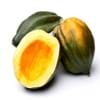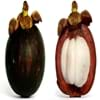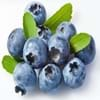Health Benefits
Good for diabetics, Improves well-being, Miraculin/miracle fruit makes sour things taste sweet
Anti-oxidant properties, Anti-inflammatory properties, Cancer prevention, Maintains healthy cholesterol level, Reduces blood circulation problems, Treatment of cough, fever & sore throat, Treatment of Hypertension
General Benefits
Has taste modifying effect
Treatment of asthma, Treatment of cataract, Treatment of hepatitis, Treatment of macular degeneration, Treatment of neurodegenerative diseases
Skin Benefits
NA
Treatment of Rheumatism & Dermatitis, Treatment of Skin Inflammation
Allergy Symptoms
Itching, Skin rash
NA
Side Effects
Changes taste of food eaten after this fruit, Coagulation
Hypertension, Ventricular Tachycardia
Best Time to Eat
As a snack in the late afternoon, Eat the fresh ones, avoid mixing with any other foods, don't eat after meal., Morning time (before lunch)
As a snack in the late afternoon, Eat the fresh ones, avoid mixing with any other foods, don't eat after meal., Morning time (before lunch), Strictly avoid empty stomach
Protein to Carb Ratio
Not Available
Vitamin A (Retinol)
Not Available
Vitamin B1 (Thiamin)
Not Available
Vitamin B2 (Riboflavin)
Not Available
Vitamin B3 (Niacin)
Not Available
Vitamin C (Ascorbic Acid)
Water Content
Not Available
Not Available
Calories in Fresh Fruit with Peel
Not Available
Calories in Fresh Fruit without Peel
Not Available
Not Available
Calories in Frozen Form
Not Available
Not Available
Calories in Dried Form
Not Available
Not Available
Calories in Canned Form
Not Available
Not Available
Calories in Juice
Not Available
Calories in Jam
Not Available
Calories in Pie
Not Available
Type
Berry
Fruit vegetable
Season
Monsoon
Spring, Summer
Varieties
Gymnema Sylvestre and Thaumatococcus Daniellii
Physalis franchetii, Physalis pruinosa, Physalis peruviana, Physalis heterophylla and Physalis philadelphica
Color
Dark red
Bright Yellow, Orange
Inside Color
Greyish-white
Orange
Origin
West Africa
Chile, Peru
Soil Type
Well-drained
NA
Climatic Conditions
Rainfall
NA
Facts about
- The name 'Miracle' because of the magical experience you get after eating it.
- When you have lemon after eating this fruit, it tastes sweet as if it is added with sugar.
- It is also used as natural sweetener.
NA
Top Importer
Not Available
Netherlands
Top Exporter
United States of America
Colombia
Botanical Name
Synsepalum Dulcificum
Physalis Peruviana
Synonym
Miracle Berry, Miraculous Berry and Sweet Berry
Alkekengi, Herschellia & Pentaphitrum
Subkingdom
Tracheobionta
Tracheobionta
Division
NA
Magnoliophyta
Subclass
Asteridae
Asteridae
Family
Sapotaceae
Solanaceae
Genus
Synsepalum
Physalis
Species
S. dulcificum
Physalis
Generic Group
Not Available
Not Available
Difference Between Miracle fruit and Physalis
We might think that Miracle fruit and Physalis are similar with respect to nutritional value and health benefits. But the nutrient content of both fruits is different. Miracle fruit and Physalis Facts such as their taste, shape, color, and size are also distinct. The difference between Miracle fruit and Physalis is explained here.
The amount of calories in 100 gm of fresh Miracle fruit and Physalis with peel is Not Available and 77.00 kcal and the amount of calories without peel is Not Available and Not Available respectively. Thus, Miracle fruit and Physalis belong to Low Calorie Fruits and High Calorie Fruits category.These fruits might or might not differ with respect to their scientific classification. The order of Miracle fruit and Physalis is Ericales and Solanales respectively. Miracle fruit belongs to Sapotaceae family and Physalis belongs to Solanaceae family. Miracle fruit belongs to Synsepalum genus of S. dulcificum species and Physalis belongs to Physalis genus of Physalis species. Beings plants, both fruits belong to Plantae Kingdom.









